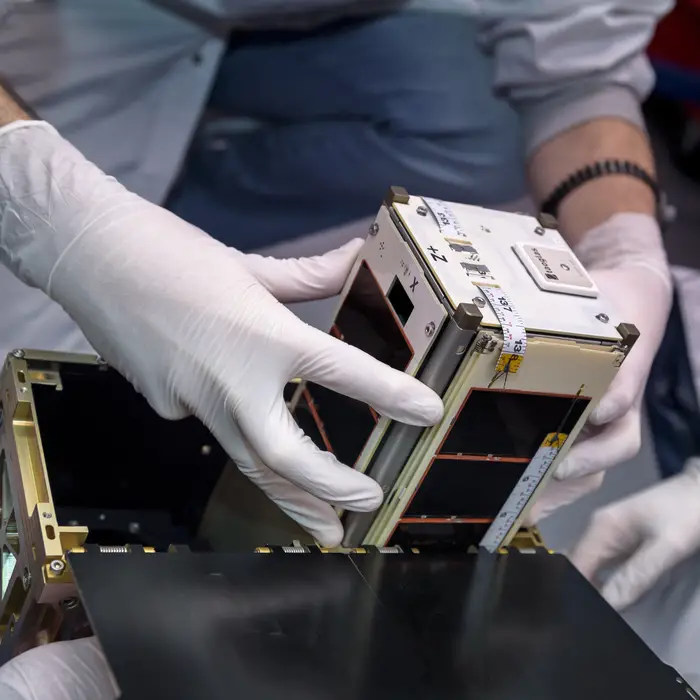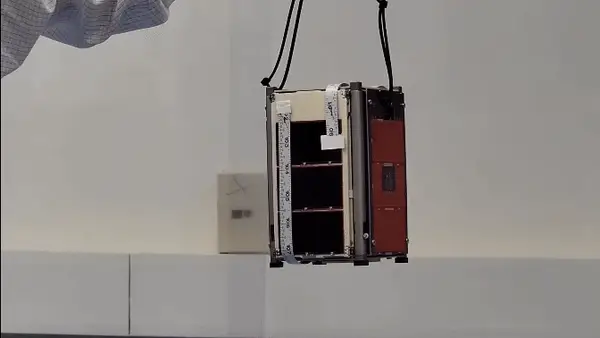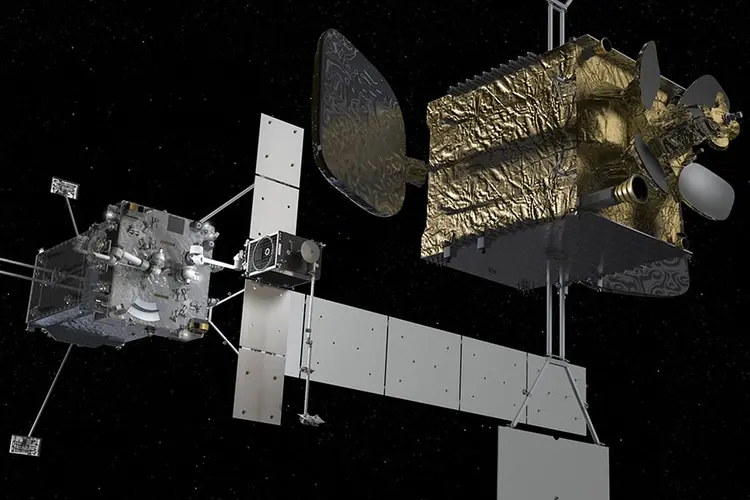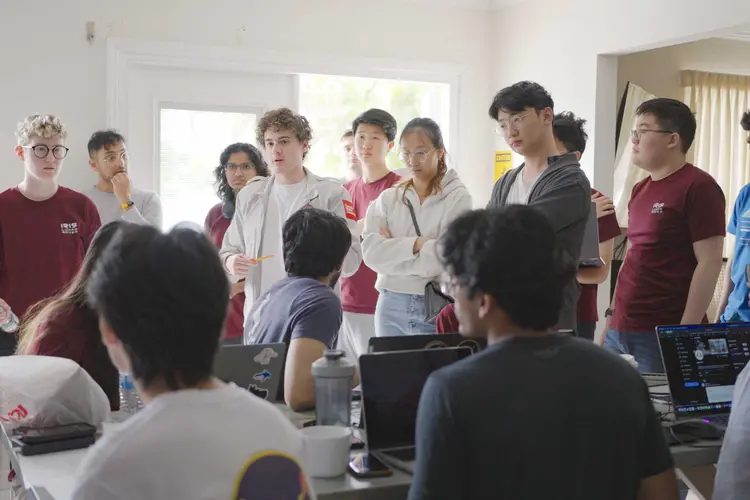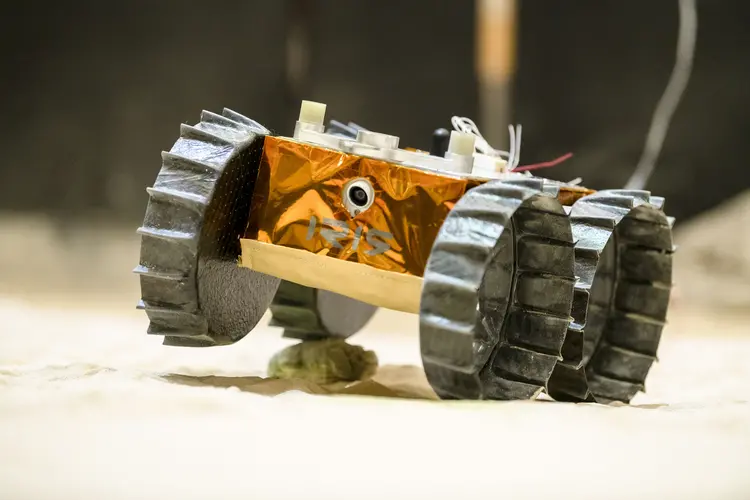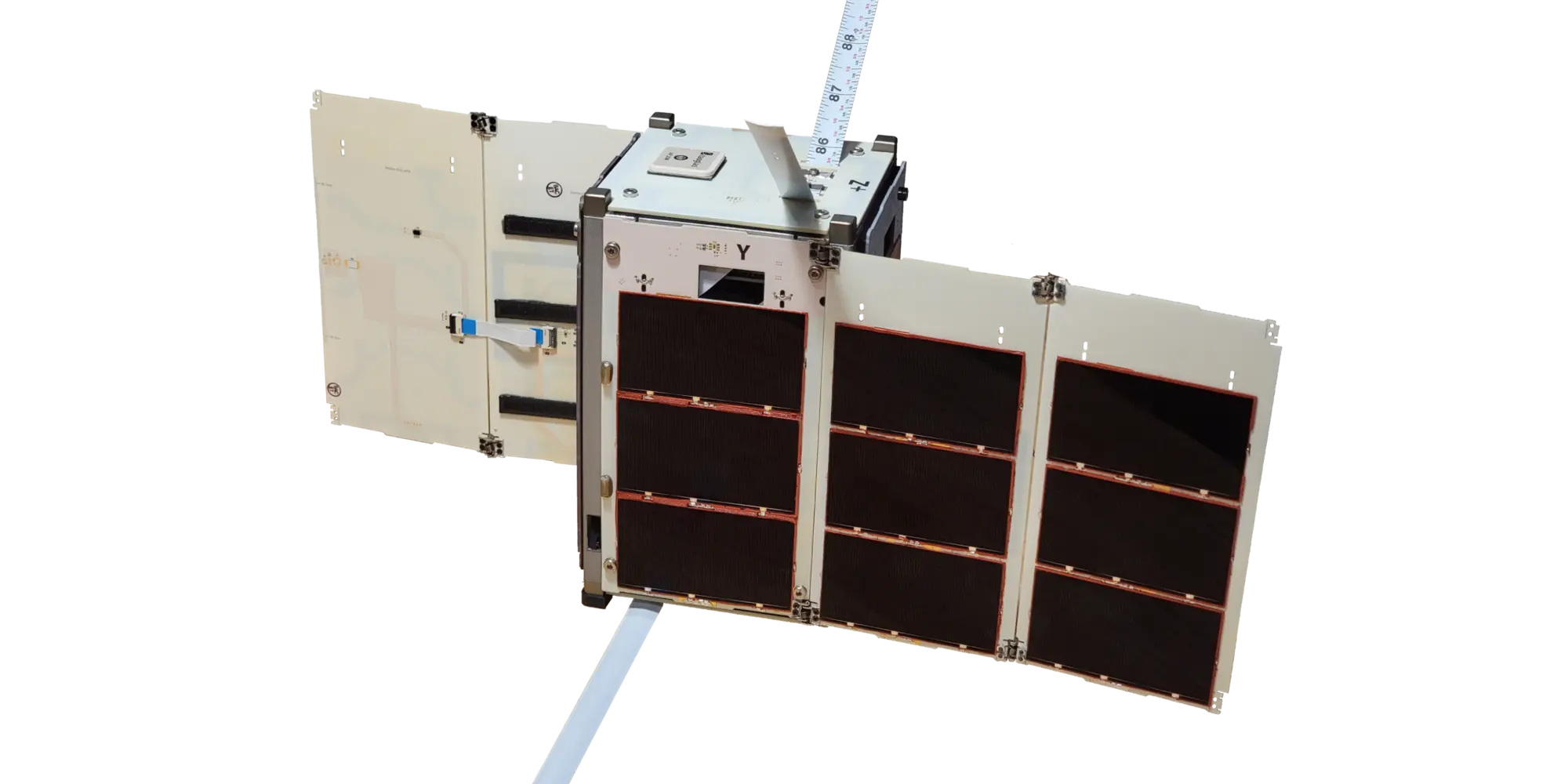
CMU To Send Group of Satellites Into Orbit To Test Low-Cost Autonomous Swarming
Media Inquiries
Satellites designed by Carnegie Mellon University researchers to orbit in a swarm and maintain communication with each other while zipping around the Earth will test the latest in low-cost, CubeSat technology.
The CMU team is monitoring four small satellites as they communicate with each other, determining where they are relative to one another and autonomously maneuvering to stay within communication range. The satellites have no propulsion systems but can change their orbital positions by adjusting their orientation in flight to increase or decrease drag. These maneuvers will allow the satellites to stay within a few hundred miles of each other and orbit in a loose formation relative to members of the swarm.
“We’re trying to do really complicated, multiagent autonomy in a very small box,” said Zac Manchester(opens in new window), an assistant professor in the Robotics Institute(opens in new window) at CMU’s School of Computer Science(opens in new window). “Our goal is to have these satellites act autonomously in a coordinated way. We want them to talk to each other, find out where their buddies are and stay close enough to maintain communication.”
Manchester’s Robotic Exploration Lab(opens in new window) leads the project, known as PY4. The experiment is funded through a NASA Small Spacecraft Technology program grant, led by the agency’s Space Technology Mission Directorate, and managed by NASA’s Ames Research Center in Silicon Valley. The four CubeSats, each measuring 4 inches by 4 inches by 6.5 inches — about the size of a cracker box — launched Monday, March 4, aboard a SpaceX Falcon 9 rocket from Vandenberg Space Force Base in California.
Watch Falcon 9 launch 53 spacecraft to orbit https://t.co/9MYMPKZM5j
— SpaceX (@SpaceX) March 4, 2024
PY4 builds on Manchester’s previous satellite swarm mission, V-R3x(opens in new window). That mission, launched in January 2021 also in partnership with the Small Spacecraft Technology program, placed three small satellites into orbit to test commercial, off-the-shelf radio transceivers that enable networking and navigation.
The PY4 mission intends to demonstrate a low-cost approach to multiple-satellite missions. Advancing autonomy and proving that relatively small and inexpensive satellites can succeed could reduce mission and operational costs dramatically for subsequent missions. This technology demonstration aims to show that a group of low-cost small satellites provide the same functionality as larger, more costly spacecraft.
Multiple satellites are needed for multipoint science data collection and for applications like positioning and tracking, stereo and 3D imaging of the Earth, and taking measurements to study the atmosphere and weather. Lowering the cost of these missions seeks to broaden the applications of multisatellite technology.
“The big one that has been motivating us in the lab has been global wildlife tracking,” Manchester said. “We could have a number of low-cost satellites monitoring animals across the world to better understand the global impacts of poaching, illegal fishing, deforestation and climate change.”
The satellites operate in low-Earth orbit at an altitude of about 342 miles (550 kilometers), slightly higher than the International Space Station. Solar panels snapped open once the satellites were in orbit to charge the batteries. The satellites orbit the Earth, passing over the poles at about 15,660 miles per hour (7 kilometers per second). The CMU team is monitoring the satellites but can only communicate directly with them using their own ground station during a five-minute window a few times per day. For the rest of the time, they rely on the Iridium constellation for communication with the satellites.
In orbit, the satellites act autonomously. They periodically measure their relative distance to establish their positions in relation to each other. Combining this information with other sensor data available from the satellites allows them to control the configuration of the swarm. A maneuver such as changing the configuration of the swarm from a line to a box could take weeks.
Manchester expects his team to gather all the data needed for their research in a few months.
